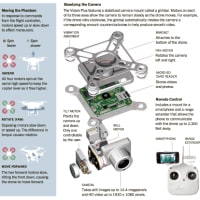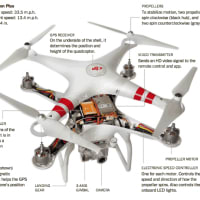Sit. Stay. Scratch.
お座り、待て、がりがり・・・・
by Elizabeth Norton on 15 January 2012, 1:00 PM
猫を紹介したので、今日は犬についての記事です。(サイエンス・ジャーナルから)人工(近親)交配がもたらす病気だと知り、暗澹たる気分になりました。何にでも清潔度や純度を追求する人工的な営みは文字通り不自然であり、それは必ずその人工度に比例する(反動)デメリットをもたらすという原理原則が自然界には働く。ドッグフードしか与えられない、水耕栽培のような家犬や家猫も、やはり自然からパニッシュメントを受けることになる。彼らの責任ではないのだが。

Dog days. Inbreeding has made a once-rare skin disorder (inset) common in golden retrievers.
真夏(ドッグデイズ) 人工交配が、かつては稀にしかみられなかった、ゴールデン・レトリバーに多い皮膚病の原因になっている。
Thanks to inbreeding, dogs are more like us than ever before. Take the golden retriever. In the past few years, the breed has begun to suffer from one of a cluster of rare diseases that also afflicts humans, maladies that cause the skin to form scaly patches and that can sometimes be fatal. A new study of golden retriever DNA shows that the same gene is mutated in the dogs and in some people, offering a much-needed clue to the disease's origins.
同種交配のお蔭で、犬たちも、かつてないほど私達に近いものとなっている。 例えばゴールデン・レトリバーをとってみれば、この数年間で、この犬種の犬は人も罹患する稀な病気の一つに悩まされ始めた。その病気は皮膚にうろこ状のハゲを作り、酷い時には死に至る病気である。 ゴールデン・レトリバーのDNAの研究では、ある人達が有するものと同じ遺伝子が、これらの犬でも突然変異を起こしていることが分っており、病気の解明にむけて大きな手掛かりとなっている。
Mating closely related dogs helps keep the breed pure, but it can also cause trouble. "When dogs are bred for qualities like size, temperament, or color, the selected genes may be physically close to other genes that cause disease," explains geneticist Catherine André, who heads the Canine Genetics Group at the University of Rennes 1 in France. "The mutated copy of the gene can rapidly spread in a given breed." And that can lead to an explosion of once-rare disorders such as hip dysplasia, epilepsy, and syringomyelia (in which a too-small skull forces the brain against the spinal cord).
近親交配により純潔血統を維持することができるが、それは同時に問題も抱えている。 「犬たちを、その大きさや、気質、色、血統遺伝などの質を維持するための交配をしようとすると、どうしても遺伝系統の近い犬を交配させることになり、これが病気の原因となっている。」と遺伝学者キャサリン・アンドレは話している。 彼女はフランスのルネス1大学のイヌ科遺伝子グループの主任をしている。 「現行の繁殖の状況の中で、突然変異した遺伝子のコピーが急速に広がっている。」と彼女は言い、これが、かつては稀であった腰部の奇形、てんかん、脊髄空洞症などの病気の爆発的な拡大の原因になっていると言う。(小さすぎる頭骨が脳を脊椎に圧迫している。)
Also cropping up lately in golden retrievers, Jack Russell terriers, and Norfolk terriers, are forms of a series of skin disorders collectively known as ichthyosis. Named after the Greek word for fish, the disorders are so rare in people that even the most common forms affect only about one in 2500 individuals. Severe types such as Harlequin ichthyosis (which breaks the skin up into diamond-shaped plates outlined by deep cracks and is usually fatal in the first few days of life) occur so seldom that researchers can't even make estimates of their prevalence. So it was hard to track down the gene or genes responsible. But a clue has emerged—now that dogs have started coming down with the same condition.
ゴールデン・レトリバーに続いて、ジャック・ラッセルテリア、ノーフォークテリアなどの犬種でもいわゆる魚鱗癬の皮膚病が次々に見られるようになりました。 ギリシャ語で魚を意味する病名がついた、この皮膚病は稀に人間でも見られますが、最も患者が多い病変でも2500人に1人の割合でしか見られません。 悪性のハーレクイン魚鱗癬に至っては、統計が取れないほど稀だと言われている。(このハーレクインタイプの魚鱗癬はダイヤモンドの形をした鱗状の病変が皮膚に深く裂け目を作り、数日で死に至るというもの) したがって、症例の少なさから、魚鱗癬の遺伝的影響を追跡調査することが、これまでは困難でした。 しかし手掛かりが見つかったのです・・・犬たちも同じ症状に罹り始めたからです。
To determine whether canine and human ichthyosis have a common basis, André and colleagues first checked for telltale mutations in golden retrievers. Working with 20 affected dogs and 20 healthy controls, the investigators screened the entire genome with 50,000 genetic markers, ultimately finding mutations in a gene called PNPLA1. In all of the dogs with the disease, which causes whitish scales that darken with age, both copies of the gene were mutated; healthy dogs had mutations in only one copy or in neither. (Inheritance of this type of ichthyosis is recessive, meaning an individual must inherit a "bad" gene from each parent for the disease to occur.)
犬も人間も魚鱗癬の特定は同じ方法でする。 アンドレとそのグループはまず、明らかに近親交配されたゴールデン・レトリバーを調べた。 まず、20頭のそれらの犬と、健康(遺伝上)について調べ、5万個もの遺伝子マーカー全体を徹底的に調査し、ついにPNPLA1と呼ばれる遺伝子に変異があることを発見した。 成長するにつれ黒くなっていく、白っぽい鱗状ハゲの病気に罹っている全ての犬たちは、この遺伝子マーカーの2重のどちらも突然変異を起こしていることが分った。 また、逆に健康な犬は、このマーカーの両方か一方が正常であることがわかった。(魚鱗癬を引き起こす遺伝子は劣性遺伝子であり、ということは個体は両親の片方からこの悪性遺伝子を受け継ぐことになる。)
For the next step, directed by co-author and geneticist Judith Fischer of the University of Freiburg in Germany, the researchers tested whether human patients had mutations in the same gene. The team found mutations in six patients from two unrelated families. Mirroring the results in dogs, family members with ichthyosis had mutations in both copies of the gene, the team reports online today in Nature Genetics, suggesting that defective PNPLA1 plays a role in the disease.
次の研究段階は、共著者であるドイツのフライブルグ大学の遺伝子学者ジュディス・フィッシャーによって引き継がれた。 研究者達は人間の同患者にも同じような遺伝子がないかを調べたのである。 その結果、この研究チームは2つの無関係の家系(遺伝学的に離れた)から6人の患者の突然変異遺伝子を発見することができた。 それらを犬の結果照らし合わせたところ、魚鱗癬の家系の人達から、この遺伝子の突然変異が見つかったのである。 同チームはこの結果をネイチャー・ジェネティックに今日報告を上げているが、病気の主因はPNPLA1の変異であると推定している。
PNPLA1 has not previously been linked to ichthyosis or to any disease, and until now its function was unknown. The protein produced by the gene belongs to a family of enzymes that play a key role in breaking down fats, an important process in forming cell membranes. When the investigators studied skin biopsies from golden retrievers with the disorder and from one human patient, they found abnormal cell membranes, resulting from the mutated gene, in the outer skin layer called the epidermis.
これまで、魚鱗癬だけでなく、他の病変ともPNPLA1遺伝子は関連づけられていなかったし、今までその機能は知られていなかった。 この遺伝子により作られたタンパク質は酵素属の一つで、細胞膜を形成する重要な過程で、脂肪を分解する役割を持っていた。 同グループが罹患した犬と人間の患者から採取した皮膚の生体組織検査をしたところ、いずれも遺伝子の変異の影響による異常細胞膜を表皮の外皮部位に見つけることができた。
André cautions that more research is needed to establish the role of the gene's protein in normal cell operations and in ichthyosis. To identify genes that may contribute to other types of the disease, her team is now studying forms of the condition that affect other dog breeds. Meanwhile, Fischer is testing about 100 additional patients for PNPLA1 mutations.
アンドレは、遺伝子タンパク質の正常細胞や魚鱗癬細胞における役割を特定するにも更なる研究が必要だと留保しており、更に、他の病変へも影響している可能性がある遺伝子を特定し、他の犬種に影響を及ぼす遺伝子条件などについて調べている。 一方で、フィッシャーは約100人の患者に対してPNPLA1変異の検査を実施している。
The study shows the power of using dog genetics to learn more about human diseases, says Heidi Parker, a geneticist at the Dog Genome Project of the National Human Genome Research Institute in Bethesda, Maryland. "When the researchers compared genetically similar dogs with disease to healthy ones, the single mutation stood out beautifully," she says. "You couldn't get such a clear result by testing a few unrelated families from different countries." Parker adds that other mutations identified in dogs have lead to gene therapies for eye diseases such as genetic disorders of the retina.
この研究は、犬の遺伝子研究成果が人間の病気の解明に繋がったことを意味しているとハイディ・パーカー氏は話している。 彼女はメリーランド州のベシースダのナショナル・ヒューマン・ゲノム・リサーチ・インスティチュート(国立ヒト遺伝子研究所)のイヌ科遺伝子プロジェクトの遺伝子学者である。 「この研究では病気の犬と健康な犬の遺伝子を比較して、一つの明確な変異がくっきりと差異として発見できましたが、このような見事な結果は、異なる国の全く関連性のない家族をテストして得られた結果としては極めて稀です。」と話している。 彼女によると、犬によtって特定できた他の変異についても、その成果が他の遺伝子異常による病気、例えば網膜疾患の遺伝子医療に次感がるかも知れないという。
お座り、待て、がりがり・・・・
by Elizabeth Norton on 15 January 2012, 1:00 PM
猫を紹介したので、今日は犬についての記事です。(サイエンス・ジャーナルから)人工(近親)交配がもたらす病気だと知り、暗澹たる気分になりました。何にでも清潔度や純度を追求する人工的な営みは文字通り不自然であり、それは必ずその人工度に比例する(反動)デメリットをもたらすという原理原則が自然界には働く。ドッグフードしか与えられない、水耕栽培のような家犬や家猫も、やはり自然からパニッシュメントを受けることになる。彼らの責任ではないのだが。

Dog days. Inbreeding has made a once-rare skin disorder (inset) common in golden retrievers.
真夏(ドッグデイズ) 人工交配が、かつては稀にしかみられなかった、ゴールデン・レトリバーに多い皮膚病の原因になっている。
Thanks to inbreeding, dogs are more like us than ever before. Take the golden retriever. In the past few years, the breed has begun to suffer from one of a cluster of rare diseases that also afflicts humans, maladies that cause the skin to form scaly patches and that can sometimes be fatal. A new study of golden retriever DNA shows that the same gene is mutated in the dogs and in some people, offering a much-needed clue to the disease's origins.
同種交配のお蔭で、犬たちも、かつてないほど私達に近いものとなっている。 例えばゴールデン・レトリバーをとってみれば、この数年間で、この犬種の犬は人も罹患する稀な病気の一つに悩まされ始めた。その病気は皮膚にうろこ状のハゲを作り、酷い時には死に至る病気である。 ゴールデン・レトリバーのDNAの研究では、ある人達が有するものと同じ遺伝子が、これらの犬でも突然変異を起こしていることが分っており、病気の解明にむけて大きな手掛かりとなっている。
Mating closely related dogs helps keep the breed pure, but it can also cause trouble. "When dogs are bred for qualities like size, temperament, or color, the selected genes may be physically close to other genes that cause disease," explains geneticist Catherine André, who heads the Canine Genetics Group at the University of Rennes 1 in France. "The mutated copy of the gene can rapidly spread in a given breed." And that can lead to an explosion of once-rare disorders such as hip dysplasia, epilepsy, and syringomyelia (in which a too-small skull forces the brain against the spinal cord).
近親交配により純潔血統を維持することができるが、それは同時に問題も抱えている。 「犬たちを、その大きさや、気質、色、血統遺伝などの質を維持するための交配をしようとすると、どうしても遺伝系統の近い犬を交配させることになり、これが病気の原因となっている。」と遺伝学者キャサリン・アンドレは話している。 彼女はフランスのルネス1大学のイヌ科遺伝子グループの主任をしている。 「現行の繁殖の状況の中で、突然変異した遺伝子のコピーが急速に広がっている。」と彼女は言い、これが、かつては稀であった腰部の奇形、てんかん、脊髄空洞症などの病気の爆発的な拡大の原因になっていると言う。(小さすぎる頭骨が脳を脊椎に圧迫している。)
Also cropping up lately in golden retrievers, Jack Russell terriers, and Norfolk terriers, are forms of a series of skin disorders collectively known as ichthyosis. Named after the Greek word for fish, the disorders are so rare in people that even the most common forms affect only about one in 2500 individuals. Severe types such as Harlequin ichthyosis (which breaks the skin up into diamond-shaped plates outlined by deep cracks and is usually fatal in the first few days of life) occur so seldom that researchers can't even make estimates of their prevalence. So it was hard to track down the gene or genes responsible. But a clue has emerged—now that dogs have started coming down with the same condition.
ゴールデン・レトリバーに続いて、ジャック・ラッセルテリア、ノーフォークテリアなどの犬種でもいわゆる魚鱗癬の皮膚病が次々に見られるようになりました。 ギリシャ語で魚を意味する病名がついた、この皮膚病は稀に人間でも見られますが、最も患者が多い病変でも2500人に1人の割合でしか見られません。 悪性のハーレクイン魚鱗癬に至っては、統計が取れないほど稀だと言われている。(このハーレクインタイプの魚鱗癬はダイヤモンドの形をした鱗状の病変が皮膚に深く裂け目を作り、数日で死に至るというもの) したがって、症例の少なさから、魚鱗癬の遺伝的影響を追跡調査することが、これまでは困難でした。 しかし手掛かりが見つかったのです・・・犬たちも同じ症状に罹り始めたからです。
To determine whether canine and human ichthyosis have a common basis, André and colleagues first checked for telltale mutations in golden retrievers. Working with 20 affected dogs and 20 healthy controls, the investigators screened the entire genome with 50,000 genetic markers, ultimately finding mutations in a gene called PNPLA1. In all of the dogs with the disease, which causes whitish scales that darken with age, both copies of the gene were mutated; healthy dogs had mutations in only one copy or in neither. (Inheritance of this type of ichthyosis is recessive, meaning an individual must inherit a "bad" gene from each parent for the disease to occur.)
犬も人間も魚鱗癬の特定は同じ方法でする。 アンドレとそのグループはまず、明らかに近親交配されたゴールデン・レトリバーを調べた。 まず、20頭のそれらの犬と、健康(遺伝上)について調べ、5万個もの遺伝子マーカー全体を徹底的に調査し、ついにPNPLA1と呼ばれる遺伝子に変異があることを発見した。 成長するにつれ黒くなっていく、白っぽい鱗状ハゲの病気に罹っている全ての犬たちは、この遺伝子マーカーの2重のどちらも突然変異を起こしていることが分った。 また、逆に健康な犬は、このマーカーの両方か一方が正常であることがわかった。(魚鱗癬を引き起こす遺伝子は劣性遺伝子であり、ということは個体は両親の片方からこの悪性遺伝子を受け継ぐことになる。)
For the next step, directed by co-author and geneticist Judith Fischer of the University of Freiburg in Germany, the researchers tested whether human patients had mutations in the same gene. The team found mutations in six patients from two unrelated families. Mirroring the results in dogs, family members with ichthyosis had mutations in both copies of the gene, the team reports online today in Nature Genetics, suggesting that defective PNPLA1 plays a role in the disease.
次の研究段階は、共著者であるドイツのフライブルグ大学の遺伝子学者ジュディス・フィッシャーによって引き継がれた。 研究者達は人間の同患者にも同じような遺伝子がないかを調べたのである。 その結果、この研究チームは2つの無関係の家系(遺伝学的に離れた)から6人の患者の突然変異遺伝子を発見することができた。 それらを犬の結果照らし合わせたところ、魚鱗癬の家系の人達から、この遺伝子の突然変異が見つかったのである。 同チームはこの結果をネイチャー・ジェネティックに今日報告を上げているが、病気の主因はPNPLA1の変異であると推定している。
PNPLA1 has not previously been linked to ichthyosis or to any disease, and until now its function was unknown. The protein produced by the gene belongs to a family of enzymes that play a key role in breaking down fats, an important process in forming cell membranes. When the investigators studied skin biopsies from golden retrievers with the disorder and from one human patient, they found abnormal cell membranes, resulting from the mutated gene, in the outer skin layer called the epidermis.
これまで、魚鱗癬だけでなく、他の病変ともPNPLA1遺伝子は関連づけられていなかったし、今までその機能は知られていなかった。 この遺伝子により作られたタンパク質は酵素属の一つで、細胞膜を形成する重要な過程で、脂肪を分解する役割を持っていた。 同グループが罹患した犬と人間の患者から採取した皮膚の生体組織検査をしたところ、いずれも遺伝子の変異の影響による異常細胞膜を表皮の外皮部位に見つけることができた。
André cautions that more research is needed to establish the role of the gene's protein in normal cell operations and in ichthyosis. To identify genes that may contribute to other types of the disease, her team is now studying forms of the condition that affect other dog breeds. Meanwhile, Fischer is testing about 100 additional patients for PNPLA1 mutations.
アンドレは、遺伝子タンパク質の正常細胞や魚鱗癬細胞における役割を特定するにも更なる研究が必要だと留保しており、更に、他の病変へも影響している可能性がある遺伝子を特定し、他の犬種に影響を及ぼす遺伝子条件などについて調べている。 一方で、フィッシャーは約100人の患者に対してPNPLA1変異の検査を実施している。
The study shows the power of using dog genetics to learn more about human diseases, says Heidi Parker, a geneticist at the Dog Genome Project of the National Human Genome Research Institute in Bethesda, Maryland. "When the researchers compared genetically similar dogs with disease to healthy ones, the single mutation stood out beautifully," she says. "You couldn't get such a clear result by testing a few unrelated families from different countries." Parker adds that other mutations identified in dogs have lead to gene therapies for eye diseases such as genetic disorders of the retina.
この研究は、犬の遺伝子研究成果が人間の病気の解明に繋がったことを意味しているとハイディ・パーカー氏は話している。 彼女はメリーランド州のベシースダのナショナル・ヒューマン・ゲノム・リサーチ・インスティチュート(国立ヒト遺伝子研究所)のイヌ科遺伝子プロジェクトの遺伝子学者である。 「この研究では病気の犬と健康な犬の遺伝子を比較して、一つの明確な変異がくっきりと差異として発見できましたが、このような見事な結果は、異なる国の全く関連性のない家族をテストして得られた結果としては極めて稀です。」と話している。 彼女によると、犬によtって特定できた他の変異についても、その成果が他の遺伝子異常による病気、例えば網膜疾患の遺伝子医療に次感がるかも知れないという。




















※コメント投稿者のブログIDはブログ作成者のみに通知されます